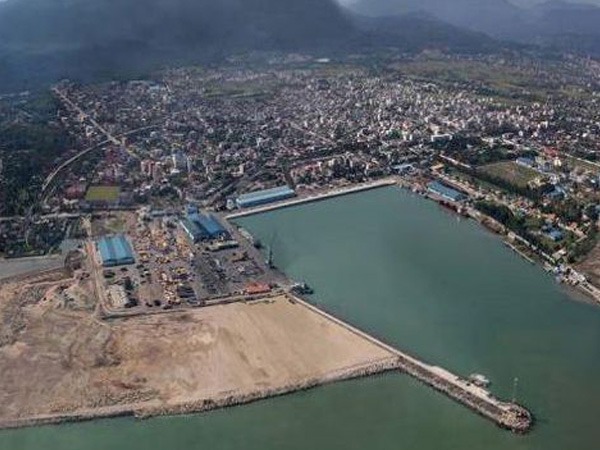Iran's Chabahar port crucial for landlocked Afghanistan trade
Landlocked Afghanistan faces many issues related to trade as it has to cross Iran or Pakistan to reach water ports as the seaports accelerate the rate of international trade and act as an inhibitor in trade cost.

- Country:
- Afghanistan
Landlocked Afghanistan faces many issues related to trade as it has to cross Iran or Pakistan to reach water ports as the seaports accelerate the rate of international trade and act as an inhibitor in trade cost. Mirza Ahmad Ebrahimi, a PhD research scholar writing in Khaama Press in an op-ed page analysed Afghanistan's two options, Chabahar or Karachi seaport.
Chabahar seaport via Iran was found to be the utmost sustainable one as a trade route. To connect Afghanistan with Iran's Zabul province for smoothing and accelerating goods movement, the Delaram-Zaranj Highway with a 218 km roadway in the Nimruz province was designed and constructed by the government of India at the request of Afghanistan and cost USD 175 million. Zabul province in Iran is well-connected by road to the Port of Chabahar. It is one of the busiest roads in Afghanistan and provides an important trade route between Afghanistan, Iran, and the rest of Asia, said Ebrahimi.
Chabahar road is much shorter and more stable than any of the routes in Pakistan, making it perhaps the most efficient means that Afghan traders can reach the final destination for their exports, where 80 per cent of Afghanistan's cargo traffic now lies. Furthermore, the Chabahar route paves the opportunity to access two countries' markets with a population of 1.4 billion rather than one country with a population of 200 million people.
Since the port begin its functioning, Afghanistan's dependency on Pakistan decreased significantly, and the trade with Pakistan fell to USD 500 million in 2018 compared to USD 2.5 billion, reported Khaama Press. Meanwhile, Chabahar Port, located in Iran's southeastern province of Sistan-Baluchistan, is the lifeline Afghanistan needs to reinvigorate its trade potential. In the meantime, such trade opportunity cuts costs and leads to greater revenue for economic empowerment and international integration which help in the county's prosperity and stability, said Ebrahimi.
Iran and India constructed a multimodal system, and overall, the routes provide a 60 per cent reduction in shipping costs and a 50 per cent reduction in shipment time between Afghanistan-India and other Central Asian countries. Afghan traders have responded with enthusiasm to Chabahar's reliable trade and transit offerings. Iran and India have provided as lucrative a deal as possible to Afghan traders and at the initial stage provided a 30 per cent discount in customs tariffs, 50 acres of land for Afghan investment, and free cooling storage facilities reported Khaama Press.
The Chabahar port is intended to have a nominal capacity of 86 million tons by 2024, and Afghanistan intends to have a considerable stake in these operations. Afghanistan's strongest prospect for a brighter future is greater trade through the Chabahar port. Moreover, Afghanistan's main export items are agricultural products which India is the largest market for it, especially, since the market potential is high in Mumbai and Gujarat where Chabahar has direct shipping to these states. (ANI)
(This story has not been edited by Devdiscourse staff and is auto-generated from a syndicated feed.)
- READ MORE ON:
- India
- Afghan
- Chabahar Port
- Chabahar
- Afghanistan
- Iran
- Mumbai
- Gujarat
- Pakistan
- Asia
- Karachi
- Central Asian
- Zabul
ALSO READ
Tragedy in Gujarat: Lioness Attack Claims Young Girl's Life
Divergent Interests Hinder Southeast Asian Security Alliance
President Murmu Advocates for Buddhist Wisdom at Asian Summit
SpaceX Satellite Supply Chain Pivot in Asia Amid Geopolitical Tensions
Tragedy in Gujarat: Officer's Bravery in Bootlegging Crackdown










